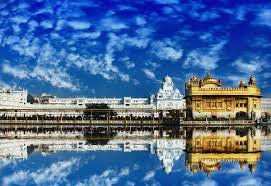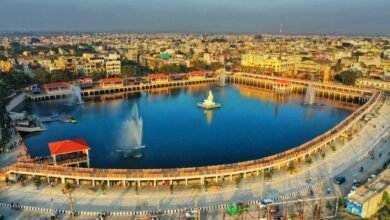“Punjab’s 170 Heritage: A Living Tapestry of Monuments, Memory, and Meaning”

Introduction
Punjab’s 170 heritage sites form a rich, layered tapestry of architecture, ritual, and everyday life that stretches across centuries. From fortified citadels and sacred shrines to bustling bazaars and vanished trade routes, these places record encounters between empires, faiths, and local communities. Each site holds stories of art and craft, conflict and coexistence, and social change stories that are essential for understanding not only regional identity but broader South Asian history. Preserving this network of sites is about more than conserving stone and plaster: it is about maintaining the living cultural knowledge held by local custodians, artisans, and storytellers. Thoughtful stewardship balances scholarly research, community participation, and sensitive sustainable tourism. In that sense, Punjab’s 170 heritage sites are simultaneously historical artifacts and active cultural resources. This article gives a concise, authoritative overview designed for readers who want cultural context, practical insight into preservation challenges, and an appreciation for why these sites deserve attention and care.
Historical breadth and cultural layers
The 170 heritage sites across Punjab represent an extraordinary chronological span and diversity of influences. Some date back to pre-Islamic eras and contain archaeological layers revealing ancient urban planning, irrigation systems, and early craft traditions. Others are visible markers of the medieval period: forts, caravanserais, and shrines that once connected regional trade networks and spiritual routes. The Mughal and Sikh eras added palaces, gardens, and distinctive religious architecture; British colonial interventions introduced civic buildings, railways, and new townscapes that reshaped social life. Each layer is readable in material culture decorative motifs, construction techniques, inscriptions, and spatial organization yet these sites also bear traces of intangible heritage: local festivals, oral histories, craft practices, and ritual use that continue to animate them. Understanding Punjab’s heritage therefore requires a multi-disciplinary view that blends archaeology, architectural history, oral history, and living tradition. That integrated perspective helps scholars, conservators, and communities make decisions that respect both physical fabric and continuing cultural meaning.
Conservation challenges and opportunities
Conserving 170 diverse sites presents logistical, financial, and ethical challenges but also unique opportunities. Many structures face material decay caused by water damage, salt crystallization, or inappropriate past repairs; climate variation and rising temperatures add new stresses. Urban growth and infrastructure projects risk encroaching on site boundaries or altering historic sightlines, while unsupervised tourism can accelerate wear. Financial constraints often limit systematic documentation and skilled restoration work. Yet opportunities exist: community-led conservation programs harness local knowledge and create livelihoods for artisans, while digital documentation 3D scanning and photographic archives can support both research and remote education. Public-private partnerships and heritage tourism, if carefully managed, can create revenue streams that fund maintenance while ensuring that benefits return to local communities. Importantly, conservation must be ethical: priorities should be set transparently, with stakeholders involved, and interventions must aim to retain authenticity rather than create staged replicas. When done well, conservation becomes a tool for cultural resilience, economic opportunity, and intergenerational learning.
Community, craft, and living heritage
Punjab’s heritage is alive because of people families who continue rituals at shrines, craftspeople who repair carved doors and tiles, and local guides who keep oral histories vibrant. Preserving intangible practices alongside physical structures is essential. Traditional craft techniques (stone carving, fresco painting, wooden joinery) are both artistic expressions and necessary skills for appropriate restoration. Supporting apprentice programs, fair marketplaces, and training initiatives strengthens both cultural continuity and local economies. Community stewardship also shapes interpretive narratives: residents decide which stories are told, how spaces are used, and which conservation measures are acceptable. Inclusive heritage work recognizes that multiple voices including women, marginalized communities, and local elders bring crucial perspectives. By embedding cultural heritage within everyday life and livelihoods, conservation moves away from being a top-down, museum-focused endeavor and becomes a collaborative, living process that sustains both places and people.
Sustainable tourism and responsible visitation
Tourism offers routes to greater awareness and funding for Punjab’s heritage, but it must be planned responsibly. Sustainable visitation emphasizes low-impact infrastructure, clear site management plans, and interpretive materials that educate visitors without commodifying sacred practices. Visitor capacity limits, off-season programming, and local guide certification can reduce pressure on fragile monuments and ensure economic benefits flow to nearby communities. Interpretive strategies that foreground context why a place matters historically and socially increase appreciation and reduce disrespectful behavior. Importantly, tourism plans should be co-designed with custodians and stakeholders so that local needs and sensitivities are honored. When balanced, heritage tourism becomes a bridge: it allows visitors to experience Punjab’s rich past while generating resources that support conservation, education, and community well-being.
Conclusion
Punjab’s 170 heritage sites are a shared legacy that ties present communities to layered histories of art, faith, trade, and daily life. Protecting this legacy requires more than technical repairs; it demands inclusive policies, skilled craft revival, community ownership, and sustainable funding models. When scholars, government bodies, local custodians, and visitors collaborate, heritage conservation transforms into cultural regeneration: places are not frozen relics but active nodes of learning, creativity, and identity. Investing in documentation, training, and ethical tourism today ensures these sites will continue to teach and inspire tomorrow. In short, stewardship grounded in respect for materials, for stories, and for the people who live with these sites is the powerful path that secures Punjab’s heritage for future generations.
Frequently Asked Questions (FAQs)
Q: Are the 170 sites open to the public?
A: Accessibility varies: some sites are active religious spaces with open visitation, others are protected archaeological zones or privately owned and may have restricted access. Always check local visitor information and respect site rules.
Q: How can I support conservation efforts?
A: Support can take many forms: visit responsibly, donate to reputable conservation NGOs, buy from local artisans, volunteer with heritage education programs, or advocate for protective policies that prioritize community benefit.
Q: Is it safe to visit these heritage sites?
A: Safety depends on the specific location and current local conditions. Many popular sites are well-managed and safe for tourists; however, always seek updated travel advice, follow local guidance, and respect site-specific safety notices.
